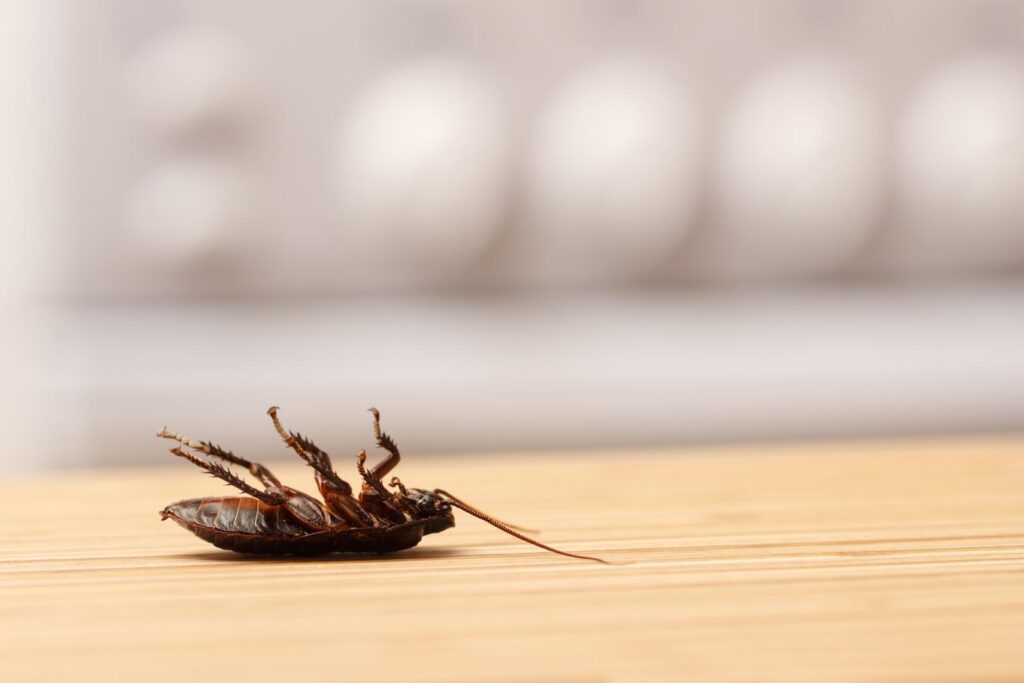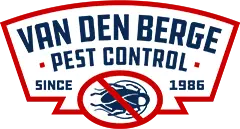
Contents
When it comes to managing ants in your home, choosing the best indoor ant control solutions is essential. You want to eliminate infestations effectively while preventing future problems. Not all methods are created equal, and understanding the nuances of ant behavior can greatly impact your approach. As you explore different options, consider how each solution can contribute to a healthier living space. What factors should you weigh in your decision?
Key Takeaways
- Effective indoor ant control solutions eliminate colonies, preventing future infestations and ensuring a pest-free home environment.
- They promote a healthier living space by reducing the risk of disease associated with ant presence.
- Utilizing the best solutions can save costs on extensive repairs from potential structural damage caused by ants.
- Implementing reliable ant control methods fosters peace of mind, allowing families to live comfortably without pest disruptions.
- The best solutions often include preventative measures, ensuring long-term maintenance of a pest-free environment.
Understanding the Ant Problem in Your Home
Ants can be more than just a nuisance; they can disrupt your home life and indicate underlying issues. Understanding the ant problem in your home starts with recognizing the ant attraction factors. Food spills, pet food, and even moisture can draw these pests in, creating a pathway to your living space.
Once they enter, ants often form a colony structure that’s highly organized, with workers, soldiers, and a queen. This hierarchy allows them to efficiently gather resources, making it essential for you to address the problem quickly.
If you spot a few ants, keep in mind there could be hundreds or thousands lurking nearby.
Benefits of Effective Indoor Ant Control
When you implement effective indoor ant control, you not only eliminate the immediate presence of these pests but also reduce the likelihood of future infestations.
By addressing this issue proactively, you can enjoy several significant benefits:
Peace of Mind: Knowing your home is ant-free allows you to relax and enjoy your space.
Healthier Environment: Effective control methods, including natural remedies, help maintain a hygienic living area, reducing the risk of disease.
Cost Savings: Preventing future infestations can save you money on extensive treatments and repairs caused by ant damage.
Seasonal Prevention: By employing seasonal strategies, you can stay ahead of ant activity, ensuring your home stays protected year-round.
Embracing these benefits fosters a sense of belonging in your home, making it a comfortable haven for you and your family.
Prioritize effective indoor ant control today!
Common Indoor Ant Species and Their Behavior
To effectively control indoor ants, you need to identify the common species invading your space and understand their behavior patterns.
Each species has unique nesting habits and foraging behaviors that influence how they interact with your home.
Identifying Common Species
Understanding the common indoor ant species that invade homes can greatly enhance your pest control efforts.
By mastering ant identification techniques, you can quickly recognize the species causing trouble. Here are four common ant species and their characteristics:
Carpenter Ants: Large, black ants that create nests in wood, often leading to structural damage.
Odorous House Ants: Small, brown ants known for their distinct smell when crushed; they often invade kitchens.
Pavement Ants: Dark, medium-sized ants that thrive in cracks and crevices, typically found near sidewalks.
Sugar Ants: Small and light-colored, these ants are attracted to sugary foods, frequently found in pantries.
Familiarizing yourself with these common ant characteristics will help you effectively combat infestations.
Ant Behavior Patterns
While each ant species exhibits unique behaviors, certain patterns emerge that can aid in your control efforts. Understanding these behaviors can help you implement effective strategies. Here’s a quick overview of common indoor ant species and their behavior patterns:
| Ant Species | Ant Foraging Behavior | Colony Structure |
|---|---|---|
| Odorous House Ant | Forages for sweet substances | Large colonies, multiple queens |
| Carpenter Ant | Prefers protein sources | Smaller colonies, single queen |
| Sugar Ant | Highly attracted to sugars | Medium colonies, multiple queens |
| Pharaoh Ant | Forages in trails for food | Large colonies, multiple queens |
| Acrobat Ant | Forages for insects | Small colonies, single queen |
Nesting Habits Insights
Nesting habits play an essential role in ant behavior, as they determine where these pests establish their colonies and how they interact with their environment.
Understanding these nesting environments can help you manage infestations effectively. Here are four key insights into common indoor ant species and their colony structures:
Carpenter Ants: Preferring moist wood, they create extensive networks within structures.
Pavement Ants: Often found under sidewalks or driveways, they build shallow nests.
Odorous House Ants: Drawn to sugary foods, they nest in wall voids and under appliances.
Pharaoh Ants: They thrive in warm areas, often nesting in hidden spots like behind baseboards.
Recognizing these patterns will empower you to tackle ant problems more effectively.
Top Indoor Ant Control Solutions Available
When it comes to keeping your home ant-free, several effective indoor control solutions can tackle these persistent pests.
One of the best approaches is using bait traps, designed to lure ants in and eliminate entire colonies. These traps contain attractants mixed with slow-acting insecticides, ensuring that foraging ants carry the poison back to their nests, effectively reducing the population.
Alternatively, if you prefer a more eco-friendly option, consider natural repellents. Common ingredients like vinegar, essential oils, and diatomaceous earth can deter ants without harmful chemicals.
Spraying a mixture of vinegar and water around entry points can disrupt their scent trails and keep them at bay.
Professional Pest Control vs. DIY Methods
Choosing between professional pest control and DIY methods can greatly impact your success in eradicating ants from your home.
While DIY approaches might seem appealing, they often lack the effective strategies that professional exterminators provide.
Here’s a quick comparison to help you decide:
Expertise: Professional exterminators understand ant behavior and can identify the specific species invading your space.
Safety: Professional treatments use pesticides and methods that are safe for your family and pets, reducing risk.
Long-term Solutions: Professionals offer ongoing monitoring and prevention tips, ensuring ants don’t return.
Time Efficiency: Hiring experts saves you time and effort, allowing you to focus on what truly matters—your home and family.
In the end, weighing these factors will guide you towards the most effective solution for your ant problem, ensuring peace of mind and a pest-free environment.
Maintaining a Pest-Free Environment After Control
Once you’ve controlled the ant problem, it’s essential to maintain a pest-free environment.
Regular cleaning habits, sealing entry points, and monitoring for reinfestation are key steps in this process.
Regular Cleaning Habits
While you’ve taken steps to eliminate indoor ants, maintaining a pest-free environment requires consistent cleaning habits.
Implementing effective sanitation practices can greatly reduce the chances of a resurgence. Here are four essential tips to keep your space ant-free:
Regularly sweep and vacuum: Remove crumbs and debris that attract ants.
Use effective cleaning products: Opt for disinfectants that eliminate food residues and pheromones.
Wipe down surfaces: Clean countertops and tables daily to prevent sticky residues.
Manage food storage: Store food in airtight containers and promptly dispose of trash.
Seal Entry Points
Sealing entry points is essential for maintaining a pest-free environment after controlling indoor ant populations.
Start with a thorough entry point inspection to identify cracks, gaps, and openings in walls, windows, and doors. These small vulnerabilities can allow ants to re-enter your space.
Once you’ve pinpointed these areas, employ effective sealing methods. Use caulk for small cracks and gaps, while weatherstripping is ideal for doors and windows.
Don’t overlook vents and utility lines—seal those too!
By taking these proactive steps, you not only protect your home but also foster a sense of community among those who value a clean, pest-free living space.
Monitor for Reinfestation
To maintain a pest-free environment after you’ve controlled indoor ant populations, it’s crucial to monitor for reinfestation regularly.
Early detection is key, and employing effective monitoring techniques can help you stay ahead of any potential issues.
Here are four practical steps you can take:
Check for Trails: Look for ant trails and droppings in common areas.
Set Traps: Use bait traps to catch any returning ants and assess the population.
Inspect Entry Points: Regularly examine sealed areas for any signs of breaches.
Maintain Cleanliness: Keep surfaces clean and free of food debris that might attract ants.
Summary
In choosing the best indoor ant control solutions, you’re not just battling tiny invaders; you’re reclaiming your sanctuary. Picture a home where crumbs don’t attract unwelcome guests, and your family can enjoy meals without distraction. Effective ant control transforms your living space into a peaceful haven, free from the hustle of ant trails. By investing in proven strategies, you guarantee a healthier environment, allowing you to savor those everyday moments without the worry of pests creeping in.
Recent Posts
Effective Flea Extermination for Your Pets
Just as a knight must armor up to battle a dragon, you need a solid
What Are Professional Flea Extermination Services?
If you’re dealing with a flea infestation, understanding professional flea extermination services is vital. These
Can You Really Keep Mice Out of Apartments?
Keeping mice out of apartments is more than just wishful thinking. By understanding their behavior
